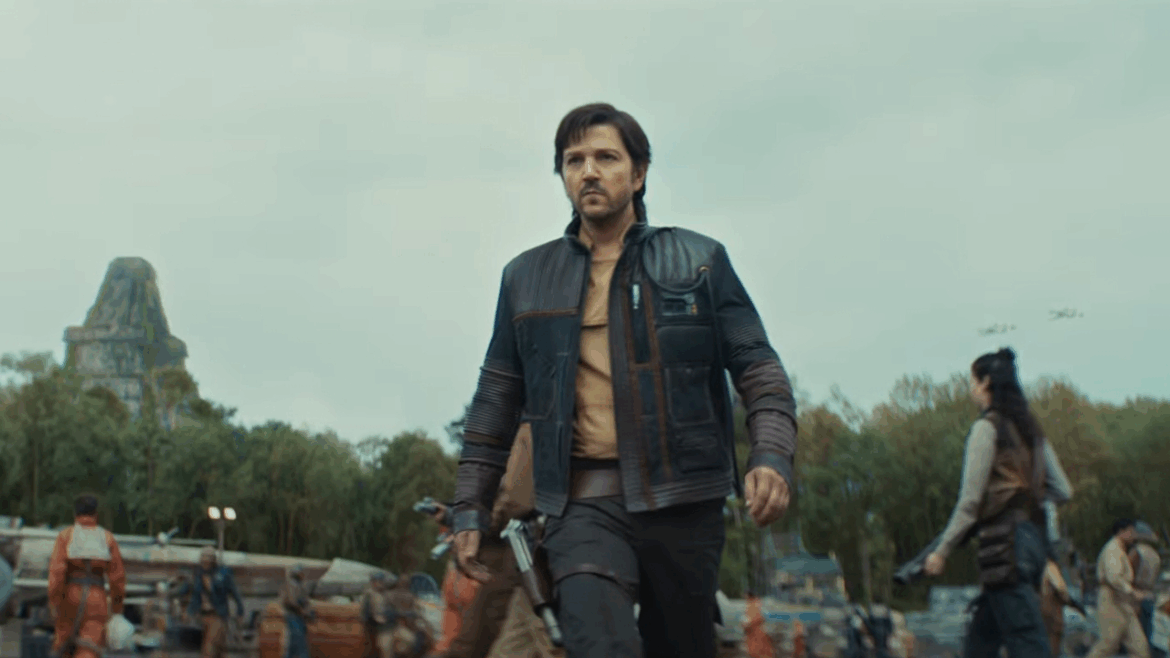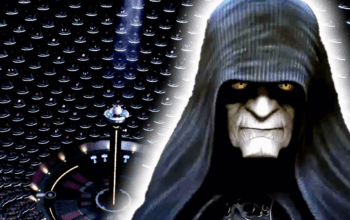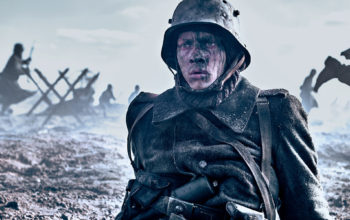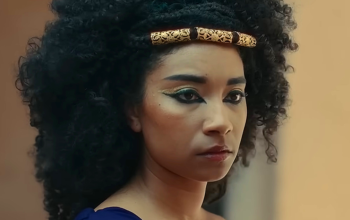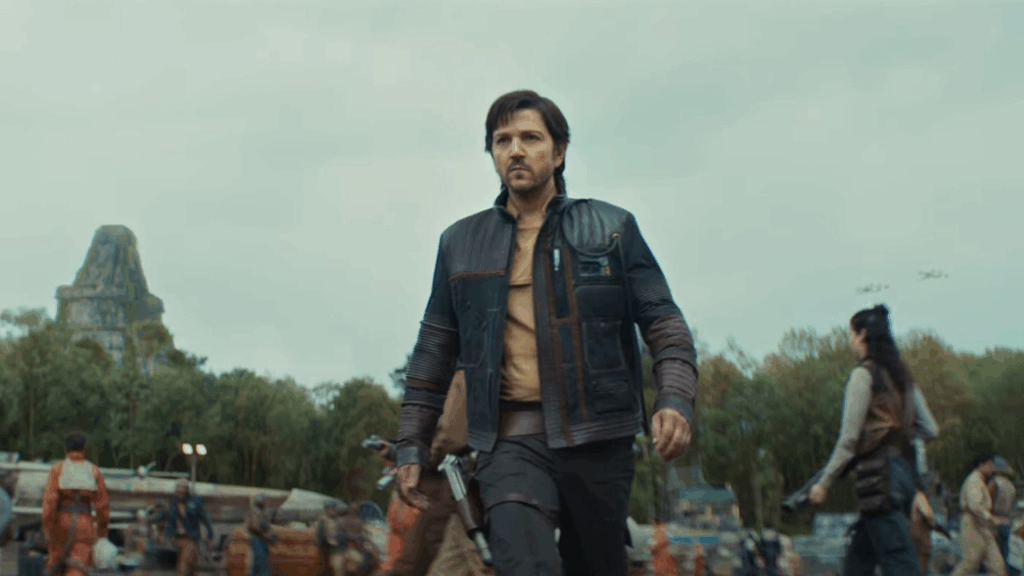
Of all the Star Wars shows released under the Disney umbrella, Andor had no right to be this good.
The production value, the performances, the writing—it’s everything you’d expect from a prestige drama, elevated to an insane degree. It was a show that pushed the boundaries of what this franchise is capable of, and it sets a new bar for storytelling in a galaxy far, far away.
That’s why it might sound strange to offer any criticism at all. In today’s media landscape, pointing out flaws can come off as you’re tearing something down. But that’s not what this is. Not even close.
It’s perfectly healthy—and necessary—to find small cracks even in the most beautifully crafted works. My personal belief is “No art is sacred”. Even the greatest masterpieces have a speck or two—if you know where to look.
Critique isn’t an attack; it’s a way to think critically and appreciate the details even more. So with all of that in mind, what follows isn’t a takedown. It’s a wishlist. A handful of nitpicks that stood out not because Andor failed—but because it came so close to perfection.
Too Many Earth Props in a Galaxy Far, Far Too Familiar

Above all other Star Wars projects, Andor is a visual triumph. The show looks incredible—gritty, grounded, and cinematic in a way Star Wars has rarely attempted. But tucked into that realism are a few design choices that feel just a bit too familiar—especially for longtime fans who thrive on Star Wars’ signature otherworldly aesthetic.
One odd point fans talked about was the blasters. Some fans mocked the AK-47-looking weapons in the Aldhani heist arc. Personally, I think that’s a bit overblown—Star Wars has always used modified real-world firearms. Han Solo’s blaster, for instance, is clearly a dressed-up Mauser C96. It’s not like anyone’s firing bullets instead of blaster bolts. If that ever happens, then we’ll have a real problem.
A slightly more jarring detail is the use of flat-panel TV screens. Yes, screens have existed in Star Wars since The Empire Strikes Back, and Andor attempts to rebrand them as “holo-screens.” But in a universe where holograms are the dominant form of communication and media, standard monitors still feel out of place, especially when they’re used so casually and frequently.
Strangely, the most distracting element (for me) might be the wardrobe. Syril Karn and several other corporate or bureaucratic characters are seen wearing full suits and ties. A tie—really? Star Wars has always walked a line between the familiar and the fantastical when it comes to clothing: robes, cloaks, tunics, militaristic uniforms—they all feel like they belong. But ties? That’s a little too close to our own boardrooms and cubicles.

Then there’s the scene where Cassian and Bix walk into what looks suspiciously like a mid-level convenience store—complete with shelving and layout that wouldn’t be out of place on any modern street corner. It’s oddly jarring to see a corner shop in Star Wars, then again, we’ve never really seen one before in Star Wars.
These are, of course, small nitpicks. They don’t ruin the show, but they occasionally pull you out of the galaxy far, far away. When you’re trying to fully immerse yourself in Star Wars, even a few Earth-bound touches can be just enough to snap you back to reality.
Where Are the Aliens?
Star Wars has always defined itself as a galaxy teeming with diverse alien species. From the cantina in A New Hope to the bustling cities of The Clone Wars, non-human characters have been a staple of the franchise’s identity. And yet in Andor, there’s a noticeable absence of them, especially among named characters. And no, background extras don’t count.
This absence feels like a missed opportunity. Including alien characters would have better reflected the diversity of the galaxy and the oppressive hierarchy of the Empire. We already know the Empire has a pro-human bias, something that’s been implied across canon. Andor could’ve taken that one step further and shown it more directly.
There is one fascinating hint: during one of Saw Gerrera’s tense conversations with Luthen, he rants about a rival rebel faction made up of “human cultists.” The idea that even Emperor Palpatine found some groups too extreme says a lot. It’s a chilling detail that could have opened the door to exploring how deep anti-alien sentiment runs within the galaxy.
Sure, we occasionally see aliens pop up—like the elderly alien woman in the hospital elevator scene—but they’re fleeting and mostly forgotten. According to Tony Gilroy, one reason for this was practical. When asked why the Narkina 5 prison was all human, he said, “I don’t know how you would work out the bathroom on the floor with eight different varieties of genitals, or whatever. It has to be that way, a system like that.” He also goes on to say that it would have distracted from the humancentic stories this show has.
Honestly, this is one of the few places where I have to disagree with Gilroy. Including aliens wouldn’t have undermined the story—it could have enhanced it. If Andor really wanted to show how cruel and dehumanizing the Empire is, this was a perfect chance. Even one alien prisoner would’ve spoken volumes.
To be fair, Andor does find clever ways to address the oppression of different peoples without being overly preachy. The inclusion of people like the Ghorm subtly implies that there are divisions even among humans, particularly those who dont speek basic (english in their world). It’s a nuanced approach, but not a replacement for what Star Wars usually does best.
At the end of the day, it’s likely that cost-cutting played a role. With a show this ambitious, adding elaborate alien costumes and makeup might’ve stretched the budget even more. It doesn’t diminish the show’s quality, but it is a missing ingredient in what could’ve been an even richer world.
Dialogue So Dense, It’s Almost Hard to Follow
One of the most distinct aspects of Andor is its dialogue. Compared to the rest of Star Wars canon, it feels like it belongs to a different genre altogether. Gone are the simple-but-profound lines of the original trilogy. Gone, too, are the juvenile, on-the-nose exchanges you’d hear in The Book of Boba Fett or The Acolyte. In Andor, the dialogue is sharp, layered, and intellectually rich—almost like something out of a Christopher Nolan film.
But that richness comes at a cost. The show delivers a torrent of information through conversation—political scheming, ideological clashes, subtext-heavy power plays—all of it fast-paced and jargon-laden. It can be overwhelming, especially on a first viewing. Subtitles quickly go from helpful to practically essential.
It’s a double-edged sword. On one hand, this is some of the best-written dialogue in any Star Wars project. On the other hand, it’s so dense that it occasionally slows the pacing or muddles key moments in real time.
On a related note, I don’t like the inclusion of Earth profanity—specifically the word “shit.” It’s only used sparingly, but it still feels out of place in a galaxy known for its own made-up slang and swearing: “Carabast,” “Dink Ferrik,” “sleemo,” and so on. These invented terms helped build Star Wars’ unique identity. Real-world curse words may seem like a small detail, but they chip away at the stylized tone that’s defined the franchise since 1977.
And it almost went further. In the season finale, during Marva’s hologram speech, she was originally scripted to say “F*** the Empire.” It would’ve been the first F-bomb in Star Wars canon. Thankfully, it was changed to “Fight the Empire”—a more restrained but equally powerful choice that preserved the tone without dulling the message.
Dense dialogue isn’t a flaw—it’s a deliberate stylistic choice that matches the show’s grounded, mature approach. But it does mean Andor asks more of its audience than most Star Wars stories. You have to lean in, listen carefully, and sometimes rewind. Understandably, not everyone will be up for that, but for those who are, the payoff is absolutely worth it.
(Almost) Too Many Story Threads at Once
It’s hard not to compare Andor to other high-concept prestige shows like Game of Thrones, The Expanse, or The Wire. These are series known for juggling multiple storylines across vast locations, each with large ensemble casts. Andor follows a similar blueprint—but that structure brings both rewards and risks.
Telling several stories at once is a major challenge, especially when it comes to pacing. At times, Andor feels like it’s pulling the viewer in four different directions. By the time we reach the finale, there are at least four major plotlines running simultaneously—each with its own tone, characters, and stakes. You have Cassian plotting a prison escape, Mon Mothma navigating a dangerous banking deal, Luthen brokering a tense alliance with Saw, and Syril Karn… eating cereal. Not exactly plot threads that flow naturally together.
One side effect is that Cassian himself can feel like a side character in his own show. It becomes clear that Andor isn’t just about him—it’s about the political, social, and ideological currents swirling around him. The series is less focused on a traditional protagonist arc and more intent on painting a broader picture of how rebellion takes root from multiple angles.
To its credit, Andor introduces its narrative threads gradually. It doesn’t bombard viewers with half a dozen storylines right out of the gate. Compare this to The Rings of Power, which launched four disconnected arcs across different continents in Episode 1, making it hard to latch onto any one of them. Andor, by contrast, starts small, focusing on Cassian and Ferrix for the first three episodes. Even when the show cuts away to introduce new characters like Syril or Dedra, their arcs remain tied to the central narrative.
Other franchises have used similar formats successfully. The Lord of the Rings films introduced multiple storylines but began by grounding viewers in one location—the Shire with Frodo, or Winterfell with the Starks in Game of Thrones. These singular points of view helped ease us into their sprawling worlds. Andor more or less follows this rule, using Cassian’s perspective as the anchor before branching out.
Still, the format demands patience. Every storyline serves a purpose, but the show asks the audience to engage with it more actively than typical Star Wars fare. If most Star Wars content is like a cold beer—easy, fast, and fun—Andor is more like a glass of vintage wine. You have to take it slowly, savor every moment, and let it breathe.
Andor’s Backstory Doesn’t Fully Add Up
Cassian Andor is a fantastic character—layered, vulnerable, and hardened by trauma. The series does an impressive job expanding his role from Rogue One, turning him into a richly developed lead. But for all the depth Andor gives him, Cassian’s backstory doesn’t fully align with what we know from Rogue One—or even with Star Wars canon’s internal timeline.
There’s one line in Rogue One that really stands out:
“I’ve been in this fight since I was six years old.”
It’s a defining quote—one that paints Cassian as someone who never had a childhood, shaped by conflict from the very beginning. But when Andor flashes back to his early life on Kenari, things get a little murky.
For one, the kid we see doesn’t look six. He appears closer to twelve. Maybe you could argue he was six when he was orphaned, and several years passed before we see him exploring the crashed ship. But later, we also see a teenage Cassian (from behind) watching clone troopers march through the streets—clearly wearing Phase II armor, placing that scene around the end of the Clone Wars and the birth of the Empire.
That timeline doesn’t quite track with the idea that Cassian was fighting since he was six. If the Empire was just rising during his teenage years, then what exactly was he fighting at age six? Separatists? Internal strife? The show never clarifies.
Then there’s the matter of Clem’s death—Cassian’s adoptive father. We’re told it happened roughly 13 years before the series, placing it around 18–19 BBY. That timing works with the early Empire era, but again, it doesn’t help explain how Cassian could have been “in the fight” from such a young age. The statement starts to feel more metaphorical than literal, which weakens its impact.
The show also leaves large pieces of Cassian’s origin vague. What exactly happened during the “mining disaster” on Kenari? Why was the planet abandoned? Why did Maarva take Cassian rather than leave him behind? These are compelling questions, but the series never fully explores them—not even in a “save it for later” kind of way. They just fade into the background.
That said, I do admire the bold choice to leave the search for Cassian’s sister unresolved. It’s a grounded, realistic message that sometimes life doesn’t give you closure. Not every story thread needs to be tied up. But if you’re going to reshape a character’s emotional core, it needs to align more cleanly with what came before.
This isn’t a deal-breaker. It doesn’t ruin the show by any means. But it’s one of the rare areas where Andor’s otherwise obsessive attention to detail seems to falter. Cassian’s past is compelling—but it’s a little too hazy for something that’s supposed to drive so much of who he is.
Season 2’s Structure – Compression of Time
When Andor was first announced, the original plan called for a five-season arc. But as production on Season 1 progressed, it became clear to showrunner Tony Gilroy and star/producer Diego Luna that the time and effort required just wasn’t sustainable. At that pace, the show wouldn’t conclude until around 2031. By that point most of the Actors would have aged out of their younger Rogue One counterparts.
On top of that, with a combined budget for both seasons reportedly reaching $650 million. With Disney/Lucasfilm shifting its priorities back toward theatrical releases, it’s unlikely a third season would have been greenlit atleast not on the same scale. Much less a fourth or fifth. Faced with this reality, the creative team made the difficult but necessary decision to wrap the story in just one more season.
Trying to condense what was originally envisioned as four more seasons into a single 12-episode final chapter was a massive challenge. As a result, some character arcs feel rushed, and several promising storylines are only hinted at without full payoff. A few examples:
- Cassian’s moral dilemma after killing a soldier who may have helped them, especially after seeing Bix’s face, would’ve made a powerful cold open.
- Wilmon joining Saw’s Partisans, only to later reappear at Yavin—an arc rich with potential for transformation.
- Syril’s growing respect for the Ghormud people before their extermination adding depth to his disillusionment with the Empire.
- Dedra finally discovers Luthen’s secret location—a moment that could’ve been a game-changing turning point.
Each of these is a compelling beat that feels like we only get a glimpse of.
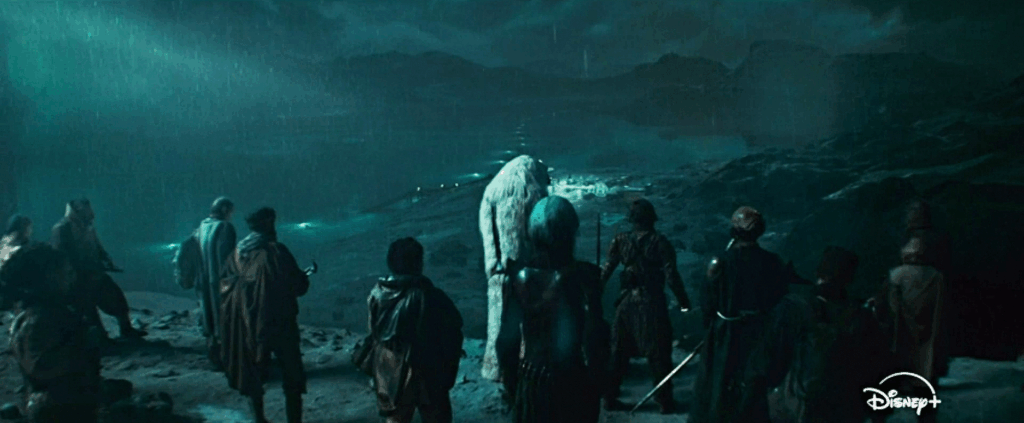
That said, wrapping the series with Season 2 was likely the right call. The post-COVID streaming boom is winding down, and Disney is clearly reallocating its attention—and budget—to big-screen projects. With Andor already a costly outlier and lacking the broad merchandise appeal of other Star Wars shows, continuing at this level of quality simply wasn’t feasible.
While a third season would have probably made more breathing room, the solution the writers landed on is honestly brilliant: dividing the final season into four 3-episode arcs, each representing one year. This structure creates a sense of rhythm and urgency while still allowing each arc to tell a focused, self-contained story.
Season 2 may have been forced into a tighter box than originally intended, but within that box, Andor delivers. It maintains its tone, its complexity, and its emotional core and its overall quality. That’s no small feat.
The Tragedy of Mon Mothma’s Family Feels Unfinished
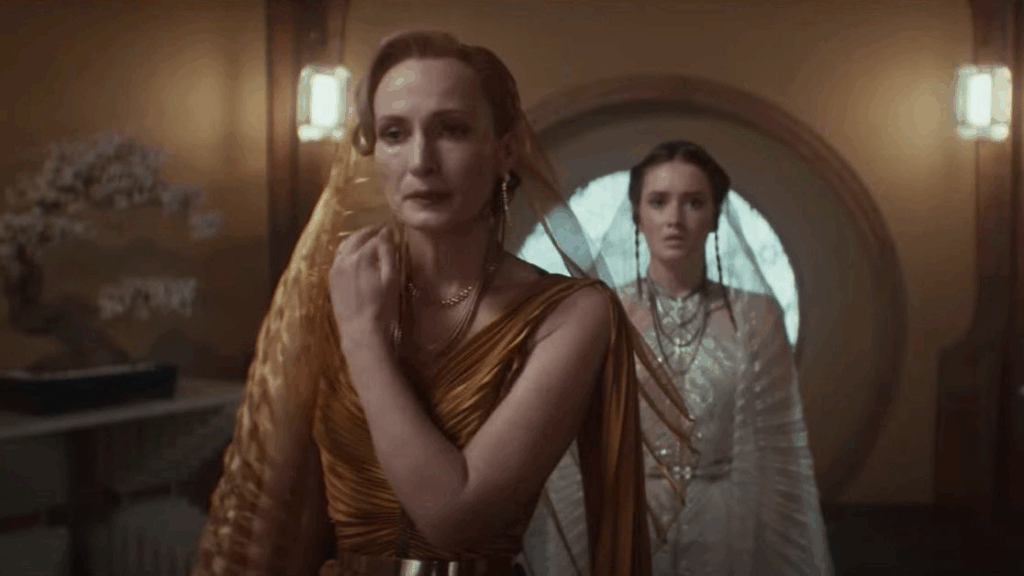
One of Andor’s greatest achievements is how it transforms Mon Mothma from a glorified background figure into a richly complex, quietly tragic character. Her storyline gives genuine weight to the personal sacrifices required in building a rebellion—not just on battlefields, but behind closed doors, across the dinner table, and inside a crumbling marriage.
To some extent, it’s understandable why her husband and daughter are largely absent in Season 2. With the story pushing toward its conclusion, screen time had to be prioritized. But considering how much emphasis Season 1 placed on Mon’s strained relationships, it feels strange—and somewhat unsatisfying—that we don’t get any real resolution.
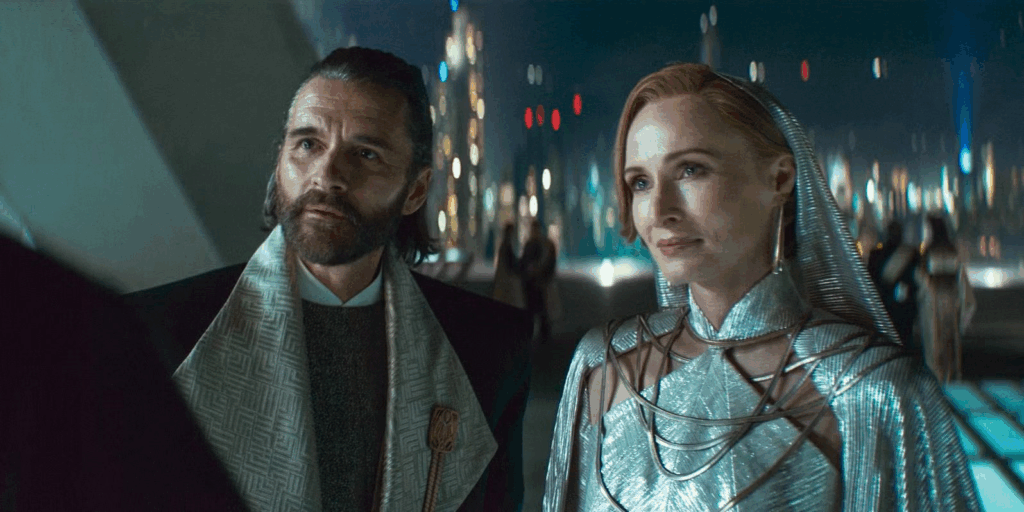
Reportedly, writer Tom Bissell confirmed that a key scene was cut from the final version of Season 2: Mon confronting Perrin after he reveals that he knew about her ties to the rebellion all along. Even under ISB interrogation, he never gave them any information that would incriminate his wife. That kind of moment could have reframed their icy dynamic—suggesting that, beneath all the resentment and emotional distance, Perrin still cared for her in his own way. It’s a huge missed opportunity.
Mothma’s arc has never been just about rebellion strategy. It’s been about the cost of doing what’s necessary. About the emotional weight of sacrificing family, love, and normalcy in service of a cause greater than oneself. The groundwork for that was laid so well in Season 1 that to leave it dangling feels like an oversight.
Instead, the closest we get to closure is a brief moment of Perrin drinking with Davo’s wife—a scene that mostly lands as confusing without the context of those cut confrontations. There’s no true fallout, no reckoning, just a vague implication of regret and distance.
Another reportedly cut scene involved Davo using his influence to help Mon secure her televised Senate speech, making her public stance against the Empire possible. It would have shown the price of her political boldness and the web of compromise she had to navigate to get there. But again, it was trimmed—likely for pacing.
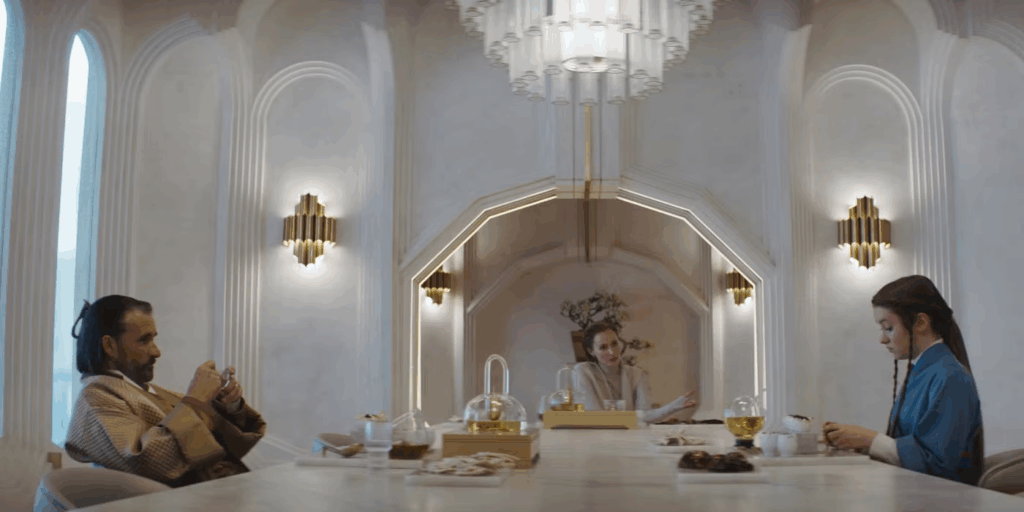
To be clear, Mon Mothma’s scenes remain some of the most compelling in Andor. Genevieve O’Reilly delivers a masterclass in restraint, conveying a woman quietly collapsing under the pressure of impossible choices. In Krennic’s words, it’s “simply astonishing.”
But without a proper emotional conclusion, her story feels unresolved. A bittersweet parting, a final confrontation, even a wordless acknowledgment between her and Perrin—any of these would have gone a long way. Perhaps future Star Wars content may help to tie up loose ends, but as of now, this is one of those interesting storylines that remain unresolved.
Bix Deserved a Fuller PTSD Resolution

Out of all the modern Star Wars shows, Andor easily handles its female characters with the most nuance. They’re not “girlboss” caricatures or walking message boards, they’re fully realized people with depth, flaws, and agency. What makes Bix Caleen a great character because she’s not a warrior or a tomboy—just a regular person caught in the wrong place at the worst possible time.
In Season 2, particularly in the second arc, Bix begins to show signs of serious PTSD. This was a powerful choice. Most Star Wars stories tend to brush past the long-term psychological effects of war, but Andor forces you to sit with them. Bix has endured some of the most harrowing moments in the series: watching her boyfriend executed, being subjected to brutal psychological torture, and nearly being sexually assaulted by an Imperial officer. And yet, she survives—but clearly not unscathed.

We see her slipping into isolation, even after reuniting with Cassian. Their rekindled relationship happens mostly offscreen, but the emotional distance is still visible. She turns to deathsticks (the galaxy’s equivalent of hard drugs) just to dull the nightmares. Her trauma is very real, and the show deserves credit for not flinching from it.
The problem is, her arc stops just short of a true resolution. All the ingredients were there—it just needed a little more time to cook.
In the end, the resolution to her trauma feels rushed. We’re meant to believe that getting revenge on Dr. Gorst was the turning point that healed her, but the way it’s handled leaves something to be desired.

First, there’s almost no buildup. We get a cryptic mission signal and an ISB scene involving Luthen’s mole—blink-and-you-miss-it moments that may confuse first-time viewers. They needed a few more scenes of Bix confronting what she’s endured, maybe even arguing with Cassian about whether it will all worth be worth it, could’ve given her healing more emotional weight.
Second, revenge doesn’t heal trauma—at least not overnight. There have been so many movies and shows don’t get me wrong Dr. Ghorst is an evil character that needed to go. But killing other people dosent heal the mental scars people go through and it sends a troubling message. This is problematic because she becomes mostly sidlined in the second half of the season.
One possible explanation, perhaps cut for time, is that Bix found faith in the Force during the year between arcs. That would explain why she seemed more eager to meet the Force healer than Cassian who dismissis the force as nothing but tricks. Finding a spiritual path to cope with her trauma would make sense—especially for someone who’s lost so much and no longer believes in the life she had. If that’s the case, it gives real weight to her decision to leave Cassian behind. She may have believed that his path—his purpose—was bigger than their relationship, and that he could never truly walk away from the rebellion. The theory holds water, but if it was meant as subtext, it needed just a little more clarity onscreen.

Still, even if the ending stumbles a bit, Bix’s storyline is one of the show’s most compelling. I’d rather watch a broken Bix struggle with trauma than see Sabine and Ahsoka smirk after dooming their galaxy. Bix is written with care, directed with restraint, and performed by Adria Arjona with haunting authenticity. She feels more real than most recent heroines in the Disney era of Star Wars—and that’s what makes her so unforgettable.
Conclusion: Even Masterpieces Have Their Cracks
In the grand scheme of things, these really are just nitpicks. None of them truly diminishes the brilliance of Andor. That’s the miracle of great storytelling—even when a show has flaws, they’re buried beneath the sheer passion and precision of the work. When the writing, direction, and performances are this strong, even the cracks feel like part of the texture.
The fact that I’m still praising the show through its flaws is a testament to how much thought and craftsmanship went into every frame. It takes something special to make us care this much about what could have been, because what is already stands so tall.
Andor made me see the Star Wars universe in a whole new light—a feat few shows in any franchise can claim.
In the grand scheme of things these are only nitpicks
And thats the miracle of good writing it disguises whatever flaws to people would have otherwise notice
The fact that im still praising this is testimat to the thought and effort the cast and crew did to bring this show to life. Making see star wars in a whole new light
